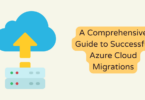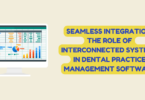
Adopting A Proactive Mindset: Key To Preventing Data Breaches
Despite news reports on data breaches headlining each day, one is still not sure about the kind of data breaches taking place at this moment in time. In general, we only hear about them in the months to come. While every day there are news reports that talk about data breaches taking place across the world, a more significant number are never reported. Companies that detect a data breach are often faced with a wide range of dilemmas and the lack of a clear path to follow with regards to what needs to be disclosed to the public. This very issue can prevent customers across the world from even understanding or knowing about the actual extent of the problem.
As companies and individuals often have confidential documents to secure, there is a lot of work to be done. It is not beneficial to any individual if a data breach wrecks a company or is the reason why employees have to lose their job or customers suffer due to lack of proper services or responses. In the coming months and years, experts need to arrive at a consensus on how to define a data breach accurately, understand the right manner to collect data and develop precise models of detection. Besides, there is also the pressing need for added transparency, so that the impact of data breaches can be analyzed.
Also, effective strategies must be identified that can cut down the consequences of a data breach. It is essential to decide what organizations must do precisely when a data breach takes place. What is needed is how to clearly define through legislation, rules, industry standards and guidelines to offer affected organizations incentives in doing the right thing. In every organization that stores data, it inherently is bringing with it a risk factor, that is the safety of the stored data – who can access it and what they can do with it. Besides, sharing the data, whether online or on the cloud, the next level of risks involved comes in trusting the people and systems with that data. So, while data in itself can become a liability, people contribute to the risk factors.
Typically, there are classic security flaws that contribute to the danger of a data exposure risk. These include:
- Shared passwords
- Insecure storage of passwords
- Lack of efficient monitoring
- Insider attacks
- The threat from vendors and third-party associates
As companies amass even larger volumes of data, data breaches will likely occur with increased frequency. Almost every company is aware that data is the new oil. And while the amount of collecting data and processing it continues to grow exponentially, the measures taken to store the data securely and control how it is used, are still lingering behind. Even today, information is stored in inadequately protected containers and transmitted across from one person to another through an encrypted communication line (SSL). But data attacks are always on the stored content as it is easier to access. To prevent data breaches from becoming a systemic, extensive and pervasive issue, it is crucial to institute proactive data security measures such as digital rights management (DRM) to protect documents at rest and in transit.
While we now understand that data is precarious material – which means the more you have, the higher the risk of a data breach; it demands to be secured adequately. For organizations to efficiently manage data services, there are specific factors that need to be understood which contribute to the risk of data infringement. These are as follows:
- Retaining data: The amount of time that the data exists within a system or a container.
- Proliferating data: The number of copies of information that exists.
- Accessing data: The number of permitted people who can access the information; the number of ways that the data can be accessed and how easy it can be to obtain access to that information.
- Liquidity of the data: The amount of time taken to access, transmit and process the information.
- Value of the data: The amount the information is worth.
Playing a growing role in data security, Digital Rights Management (DRM) can efficiently protect your information in all five areas, as mentioned above.
As a technology and solution to prevent data breaches and piracy from taking place, DRM is designed to protect documents and your content from unauthorized access and prevent the unlawful alteration and dissemination of your protected content (i.e. control how documents are used). Consider document DRM as a sufficient control that prevents people or users from replicating your information or spreading it to unauthorized users without your knowledge or consent. Implementing digital rights management for your documents and content can help ensure that your data is seen by only permitted users and is distributed in the right manner and appropriately.






